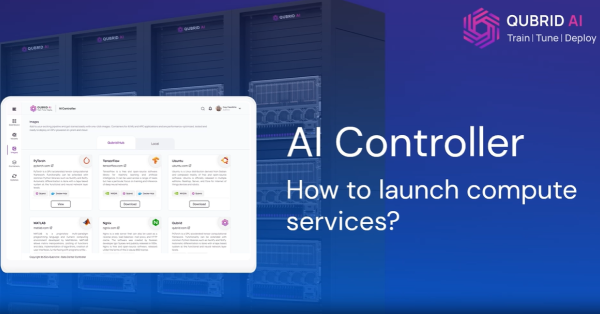Utilities are not monolithic. From rural substations and dense urban grids to vast pipeline corridors and indoor turbine halls, the communication needs of utility operations vary significantly by geography, asset type, and use case. As a result, there is no one-size-fits-all private network architecture. Instead, utilities are adopting tailored deployment models, mixing spectrum bands and infrastructure footprints to align network capabilities with operational demands.
In this fourth installment of the Connected Utilities series, we break down the key architectural approaches and spectrum strategies utilities are using to build scalable, reliable, and future-ready private LTE and 5G networks.
Deploying Private LTE for Localized Utility Sites and Facilities
For high-value, contained sites like power plants, water treatment facilities, and small refineries, utilities often opt for site-specific deployments. These networks typically cover 1 to 3 kilometers and support latency-sensitive applications such as SCADA, teleprotection, and asset monitoring. Utilities commonly use mid-band spectrum such as CBRS (3.5 GHz) or 3.7 GHz due to its balance of coverage and capacity. Compact EPC or 5GC cores are often deployed on-site for full local control, resilience, and low-latency performance.
In addition to operational control, these site-specific deployments serve as testbeds for broader innovation. Utilities can experiment with new use cases such as remote-controlled robotics, AI-powered fault detection, and immersive digital twins, without impacting the performance of larger grid-wide systems. Because these networks are physically constrained and independently managed, they also present fewer security and integration risks, making them ideal for utilities beginning their private network journey.
Regional Private Network Architectures for Grid-Wide Utility Operations
In utility districts, oil fields, or smart city zones spanning 5 to 50 kilometers, regional private networks are emerging as a dominant model. These architectures aggregate data from distributed assets such as distributed energy resources (DERs), smart meters, and reclosers. To achieve broader coverage, utilities frequently combine 700 MHz or 900 MHz low-band spectrum with local edge compute at strategic sites. This hybrid architecture enables real-time analytics while reducing backhaul dependency, and is especially useful for resilience planning and disaster response scenarios.
Furthermore, regional architectures allow for dynamic load balancing, outage management, and field crew coordination across multiple substations or generation sites. They serve as the connective tissue for district-wide automation, facilitating coordinated energy dispatch and demand-side management. With regional visibility and control, utilities can respond faster to faults, optimize asset usage, and adapt to fluctuating generation from renewables.
Wide-Area Private Networks for National Grid and Pipeline Coverage
For national electric grids, long-distance pipelines, and wide-area telemetry systems, utilities are turning to wide-area private networks that cover 100+ kilometers. These require low-frequency bands such as 450 MHz, 700 MHz, or dedicated utility spectrum like Anterix’s 900 MHz in the U.S. These bands offer long propagation distances and deep penetration, making them ideal for rural and cross-state applications. Centralized control planes paired with distributed RAN infrastructure allow for efficient resource allocation and network orchestration across large areas.
Wide-area architectures are particularly critical for utilities managing grid reliability at scale. These networks enable grid-wide telemetry, remote switching, and storm response coordination across thousands of endpoints. They also support national-level security and resilience strategies, helping utilities meet continuity-of-service mandates during disasters. As utilities expand electrification and interconnect regional energy markets, wide-area private networks will become the digital backbone of transnational energy infrastructure.
Indoor Private 5G and Wi-Fi Hotspots for Utility Control Centers
Utilities also need reliable indoor connectivity for control rooms, underground facilities, and turbine halls. In these environments, mmWave (26/28 GHz) or Wi-Fi 6 is used to deliver high-speed, low-latency connectivity over short ranges. These hotspots support bandwidth-heavy applications like real-time video feeds, AR/VR-based maintenance tools, and mobile worker enablement within constrained indoor spaces. They are often integrated with broader private network backbones to maintain seamless connectivity.
In high-noise or metallic environments, such as hydroelectric generator rooms or underground pump stations, wireless connectivity faces unique interference challenges. Hotspot deployments are designed to overcome these barriers using advanced beamforming, mesh topologies, and local caching. These systems also enhance worker safety through real-time alarm systems, digital work permits, and wearable connectivity, ensuring that even isolated teams stay connected and protected.
Smart Spectrum Strategies for Private LTE and 5G Utility Networks
Utility network design must balance spectrum availability, performance, and regulatory constraints. The table below summarizes key bands used in different regions:
| Country/Region | Spectrum Band | Typical Use | Notes |
|---|---|---|---|
| USA | CBRS (3.5 GHz) | Site/regional LTE | Shared access (PAL and GAA) |
| USA | 900 MHz | Rural grid comms | Reserved for utilities |
| Germany | 3.7 – 3.8 GHz | Campus networks | Allocated for private industrial use |
| France | 2.6 GHz | Industrial broadband | Allocated for enterprise networks |
| Japan | 4.6 – 4.9 GHz | Local private 5G | Allocated by MIC |
| Global | 450 MHz | Critical voice, SCADA, telemetry | Active via 450 MHz Alliance |
Choosing the right band depends on regulatory access, propagation requirements, and application mix. In some cases, utilities employ multi-band strategies to optimize coverage (low-band), capacity (mid-band), and precision (high-band).
In addition to spectrum selection, utilities must consider licensing terms, interference management, and integration with legacy systems. For example, CBRS in the U.S. allows utilities to start with unlicensed access (GAA) and upgrade to Priority Access Licenses (PALs) as demand grows. Meanwhile, countries like Germany have implemented streamlined industrial spectrum licensing to encourage adoption by utilities and manufacturers alike. These evolving frameworks offer utilities the flexibility to scale their networks gradually while maintaining compliance and performance.
Designing Resilient Utility Networks with the Right Architecture and Spectrum
Utility private networks must align with the physical, operational, and regulatory realities of each deployment environment. By matching network architecture and spectrum strategy to the specific needs of each use case or geography, utilities can create scalable and future-proof digital infrastructure. Whether enabling digital substations, supporting DERs, or powering AI at the edge, the right combination of deployment model and frequency band is essential to unlocking the full potential of private LTE and 5G.
In the next blog in the Connected Utilities series, we will explore how utilities are integrating private networks with edge computing and AI to enable predictive maintenance, autonomous control, and real-time operational intelligence.
Explore More from the Connected Utilities Series
Continue your learning journey with our full Connected Utilities blog series:
- Why Utilities Are Investing in Private Networks to Power the Digital Grid
- Strategic Use Cases for Private Networks in the Utility Sector
- Trends Accelerating Private Network Adoption in the Utility Sector
- Deployment Architectures and Spectrum Strategies for Utility Private Networks
- Edge Computing and AI for Predictive Utility Operations
- Governance and Lifecycle Management of Utility Private Networks
- Partner Ecosystems for Scaling Utility Private Networks
- Sustainability and ESG Drivers for Private Networks
- Monetization and Shared Use Models for Utility Private Networks
- Cybersecurity and Zero Trust for Utility Private Networks
- Future Roadmap – 5G Advanced and the AI-Driven Grid
Strengthen Your Utility Private Network Strategy
Assess your grid’s 5G readiness with our industry-specific tool, uncover gaps, and get clear, executive-ready insights to plan and deploy with confidence. Check Readiness & Premium Plans



























